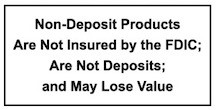Retirement is a significant milestone that requires careful planning and preparation. Taking proactive steps during your working years can help ensure a comfortable and secure retirement. In this blog post, we will discuss essential steps you can take to prepare for retirement and set yourself up for financial stability in your golden years.
- Define Your Retirement Goals
Start by envisioning your ideal retirement lifestyle. What do you want to do? Where do you want to live? How do you want to spend your time? Defining your retirement goals will help you determine the amount of money you’ll need to save and guide your financial decisions throughout your working years. - Assess Your Current Financial Situation
Take a comprehensive look at your current financial situation. Evaluate your income, expenses, and debt. Calculate your net worth by subtracting your liabilities from your assets. Understanding where you stand financially will give you a baseline from which to plan and set realistic savings targets. - Create a Budget
Developing a budget is essential for effective financial management. It helps you allocate your income wisely and track your spending. Identify your essential expenses, such as housing, utilities, and healthcare, as well as discretionary expenses. Look for areas where you can reduce expenses and redirect those savings towards retirement savings. - Establish an Emergency Fund
An emergency fund is a crucial component of financial security. Aim to save three to six months’ worth of living expenses in a separate savings account. This fund will provide a safety net in case of unexpected events such as job loss or medical emergencies and prevent you from dipping into your retirement savings prematurely. - Maximize Retirement Contributions
Contribute the maximum amount allowed to your employer-sponsored retirement plans, such as a 401(k) or 403(b). Take advantage of any employer matching contributions as it’s essentially free money. If your employer doesn’t offer a retirement plan, open an Individual Retirement Account (IRA) and contribute to it regularly. Increase your contributions whenever possible, especially as your income grows or you receive raises. - Diversify Your Investments
A diversified investment portfolio helps manage risk and maximize returns. Consult with a financial advisor to develop an investment strategy that aligns with your risk tolerance and retirement goals. Consider investing in a mix of stocks, bonds, mutual funds, and other investment vehicles that suit your needs. Regularly review and rebalance your portfolio to maintain diversification. - Pay Down Debt
Reducing and eliminating debt is a crucial step in preparing for retirement. High-interest debt, such as credit card debt, can erode your savings and financial security. Prioritize paying off debts aggressively, starting with high-interest balances. Consider strategies such as debt consolidation or balance transfers to lower interest rates and accelerate debt repayment. - Educate Yourself on Retirement Plans and Benefits
Familiarize yourself with the retirement plans and benefits offered by your employer. Understand the eligibility criteria, vesting periods, and payout options. Stay informed about any changes or updates to retirement plans, Social Security, or government benefits that may impact your retirement income. Knowledge is power when it comes to planning for retirement. - Explore Additional Retirement Savings Vehicles
While employer-sponsored retirement plans and IRAs are common options, explore other retirement savings vehicles that may be suitable for your situation. For example, Health Savings Accounts (HSAs) offer triple tax advantages and can be used to save for medical expenses in retirement. Consider annuities or taxable investment accounts as additional avenues for retirement savings. - Continuously Assess and Adjust Your Plan
Regularly review your retirement plan to ensure it remains on track. Assess your progress towards your savings goals and make adjustments as needed. Factors such as changes in income, family circumstances, or market conditions may require you to modify your retirement strategy. Stay flexible and adapt your plan as circumstances evolve.
In conclusion, preparing for retirement requires proactive steps during your working years. Define your retirement goals, assess your financial situation, create a budget, establish an emergency fund, maximize retirement contributions, diversify investments, pay down debt, educate yourself on retirement plans and benefits, explore additional retirement savings vehicles, and continuously assess and adjust your plan. By taking these steps, you’ll be well on your way to a financially secure and fulfilling retirement. Remember, the earlier you start, the more time you have to grow your savings and build a solid foundation for your retirement years.


